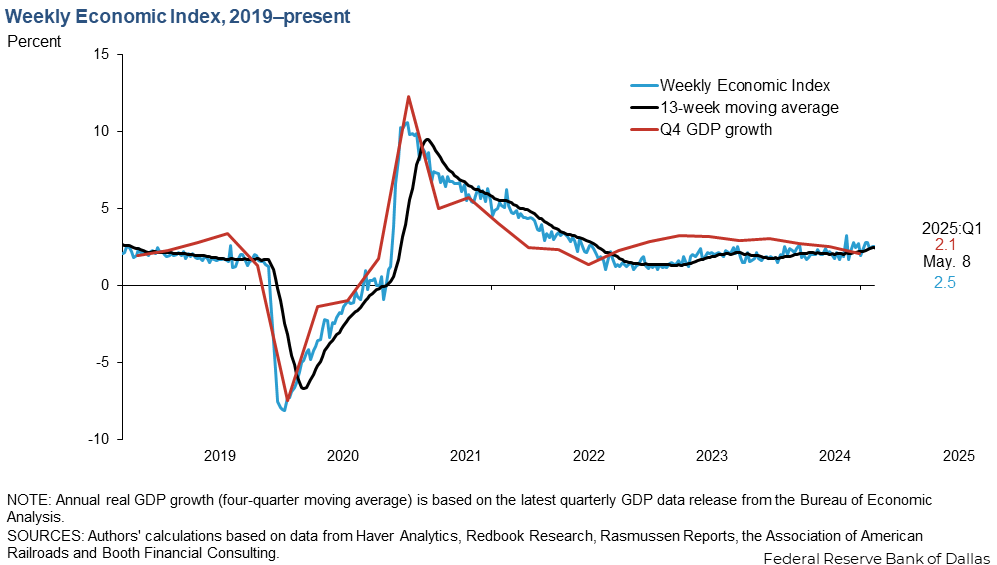
U.S. Economy
Weekly Economic Index
The Weekly Economic Index (WEI) provides a signal of the state of the U.S. economy based on data available at a daily or weekly frequency. It represents the common component of 10 different daily and weekly series covering consumer behavior, the labor market and production. It is updated Thursday at or shortly after 10:30 a.m. CT, using data available up to 8 a.m. CT.
December 18, 2025: Update
- The WEI is currently 2.29 percent, scaled to four-quarter GDP growth, for the week ended Dec. 13 and 2.29 percent for Dec. 6. The 13-week moving average is 2.24 percent. This is compared with 2.08 percent four-quarter GDP growth through second quarter 2025.

WEI Authors
The WEI was developed by Daniel J. Lewis, a former economist at the Federal Reserve Bank of New York; Karel Mertens, senior economic policy advisor at the Federal Reserve Bank of Dallas; and James H. Stock, professor of economics at Harvard University.
Contact Information
For any data-related questions, please contact:
Tyler Atkinson: tyler.atkinson@dal.frb.org
Isaiah Spellman: isaiah.spellman@dal.frb.org